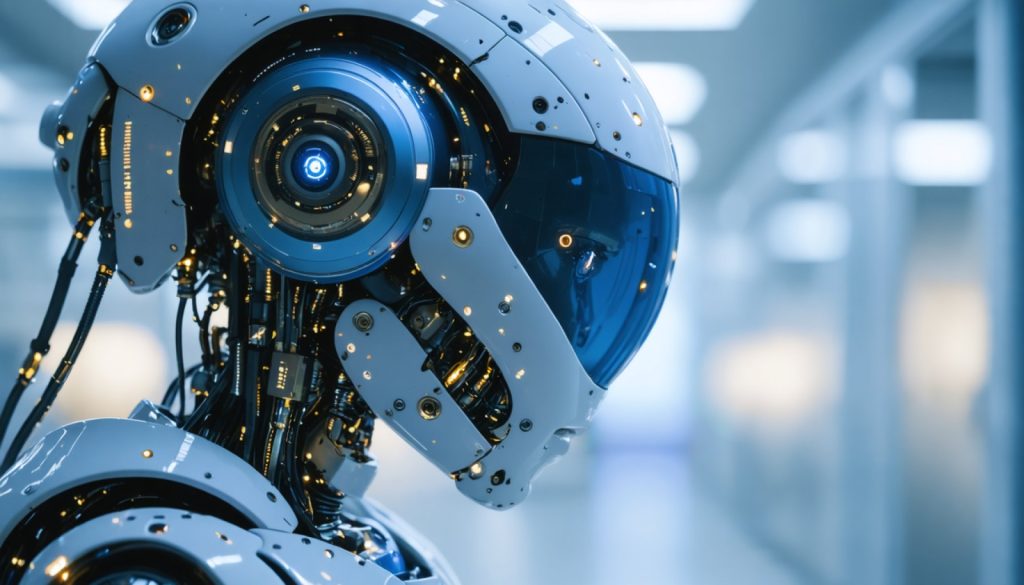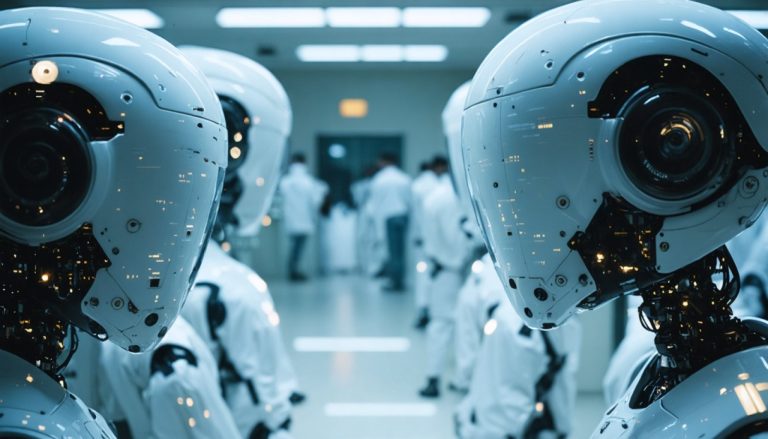
- Artificial intelligence (AI) holds the potential to revolutionize daily life, addressing critical challenges in sectors such as healthcare and education.
- AI advancements could mitigate physician shortages in regions like the U.S. and India by providing essential medical expertise.
- In education, AI aids could alleviate staffing issues, as seen in U.S. schools and the U.K., offering innovative learning solutions.
- Beyond white-collar jobs, AI and robotics promise to enhance efficiency in manual labor sectors, with companies like Nvidia advancing the field.
- AI-driven changes might lead to shorter workweeks, echoing economist John Maynard Keynes’ vision of a 15-hour workweek.
- This technological shift urges society to rethink traditional constructs of work and leisure, presenting opportunities for greater life balance and fulfillment.
- The future of AI promises both efficiency and philosophical shifts, inviting humanity to redefine the essence of human fulfillment.
As we stand on the brink of a technological revolution, Bill Gates casts a bold vision: Artificial intelligence could profoundly reshape the fabric of our daily lives, altering everything from how we work to how we live. In his latest forecast, Gates suggests that AI’s rapid evolution may soon address critical shortages in sectors like healthcare and education, potentially erasing long-standing deficits and unlocking new opportunities for people worldwide.
Imagine a world unburdened by a lack of doctors and teachers—this is the future Gates envisions. In the United States alone, the Association of American Medical Colleges projects a shortfall of up to 86,000 physicians by 2036. Globally, regions across Africa and countries like India face dire shortages that hamper their healthcare systems. Gates argues that AI, with its capacity to deliver “medical IQ,” could bridge these gaps, providing critical expertise where it’s needed most. Already, startups such as Suki and Zephyr AI are leveraging AI to streamline healthcare operations, from billing to breakthroughs in diagnostics.
In education, the crisis is equally stark. A recent 2023 survey found 86% of K-12 public schools in the U.S. grappling with hiring woes, while nearly half reported being understaffed. The U.K. is not immune; institutions like London’s David Game College have turned to AI tools to offer new learning pathways in subjects including English and math. These digital aids promise to lighten the load on educators, acting as both knowledge enhancers and time-savers.
Beyond white-collar realms, Gates asserts that AI’s impacts will ripple through manual labor sectors. Companies like Nvidia are at the forefront, designing robots sophisticated enough to tackle factory tasks, construction duties, and even hotel housekeeping. Gates hints at a revolutionary leap in robotics, where machines could master the dexterity needed for complex tasks efficiently and affordably.
Reflecting on these potential shifts, Gates invokes the spirit of economist John Maynard Keynes, who in 1930 mused about a future where the workweek might only span 15 hours. While we haven’t yet embraced Keynes’ vision—with most of us still investing 40 hours a week—it’s conceivable that AI could finally tip the balance.
However, this future isn’t just about easing workloads—it’s about philosophical transformation. Gates contemplates a society where shorter workweeks afford us the luxury of retiring earlier or simply savoring more leisure time, a prospect both exhilarating and intimidating to those accustomed to productivity-driven lives.
The promise of AI extends beyond mere efficiency improvements. It challenges us to rethink the constructs of work and play, beckoning a future where humanity may choose how to best use its newfound freedom. The key takeaway? We stand at a crossroads, and how we navigate the unfolding path of AI will ultimately define our work culture and perhaps, the very essence of human fulfillment.
Bill Gates Envisions AI Reshaping Healthcare, Education, and Labor
Introduction
Bill Gates recently envisioned a future reshaped by Artificial Intelligence (AI), suggesting it could revolutionize industries such as healthcare, education, and manual labor. Gates foresees AI addressing significant shortages and creating a new societal fabric where work and leisure intertwine in unprecedented ways. This vision spans from addressing critical shortages of professionals to fundamentally altering our work culture and leisure opportunities.
AI in Healthcare: A Revolutionary Shift
AI’s potential in healthcare is vast:
1. Bridging Professional Shortages: The U.S. faces a projected shortfall of 86,000 physicians by 2036. AI could fill these gaps by performing routine diagnostics, assisting in surgeries, and managing patient data. Companies like Suki and Zephyr AI are leading this charge.
2. Enhancing Diagnostic Accuracy: AI algorithms can analyze medical imaging more accurately than human counterparts, as demonstrated by Google’s DeepMind, which has successfully diagnosed eye diseases. These advancements can lead to earlier and more accurate detection of conditions, potentially saving lives.
3. Personalized Medicine: AI can analyze patient histories to provide personalized treatment plans, significantly improving patient outcomes.
4. Telemedicine and Remote Monitoring: AI can facilitate telemedicine services, extending healthcare access to underserved regions.
AI in Education: Transforming Learning Environments
Education could undergo a monumental shift thanks to AI:
1. Alleviating Teacher Shortages: With 86% of K-12 public schools in the U.S. facing hiring difficulties, AI could assist teachers by personalizing learning, grading assignments, and even tutoring students.
2. Customized Learning Paths: AI can tailor educational content to meet individual student needs, ensuring more effective learning. Tools like AI-driven learning platforms are already being used to personalize education in institutions like London’s David Game College.
3. Administrative Efficiency: AI can handle scheduling, attendance tracking, and other administrative tasks, allowing educators to focus more on teaching.
AI in Manual Labor: Efficiency and Precision
AI’s impact extends to manual labor sectors:
1. Robotic Assistance: Companies like Nvidia are developing robots capable of handling diverse tasks, from factory assembly lines to precision farming.
2. Workplace Safety: AI can monitor workplace conditions to enhance safety and reduce the frequency of accidents.
3. 24/7 Operations: AI-powered machines can operate around the clock, increasing productivity and efficiency.
Philosophical and Cultural Impacts
– Shorter Workweeks: Inspired by John Maynard Keynes’ vision of a 15-hour workweek, AI could afford us the luxury of more leisure time. This shift challenges the existing work culture, emphasizing quality of life over productivity.
– Redefining Human Fulfillment: This future beckons society to redefine fulfillment, potentially shifting focus from work as a primary identity to exploring diverse interests and passions.
Pressing Questions
– What are the ethical considerations of AI’s rapid integration? Issues such as data privacy, job displacement, and decision-making biases need addressing.
– How will societies manage the economic transition? Governments and industries must collaborate to provide retraining programs for displaced workers.
– What regulations are necessary for AI implementation? Setting industry standards and ethical guidelines for AI development and use will be crucial.
Actionable Recommendations
– Stay Informed: Regularly update knowledge on AI advancements to understand its potential impacts.
– Invest in Education: Focus on lifelong learning to remain adaptable in an AI-driven world.
– Support Ethical AI: Advocate for transparent AI practices and algorithms.
– Embrace Change: Be open to new work models that may emphasize flexible hours and remote work.
Conclusion
As AI continues to evolve, its integration into healthcare, education, and labor sectors offers transformative potential. We stand at a pivotal moment where strategic adaptation and an open mindset will define how effectively we harness AI’s benefits. Embrace the change, prepare for new opportunities, and welcome a future where the balance of work and play is reimagined.
For more insights on technology and innovation, visit Microsoft and Google.



